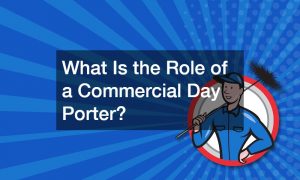

American farms are looked at as places with pastoral beauty and for many, this dream is in fact a reality. There are many American farms that adhere to that icon that is seen on many supermarket products. The icon is that of a farmer riding a red tractor in a sea of green grass, with a brown wooden fence in the distance.
American farms have undergone a substantive change in the past forty years, brought on by the subsidies that came about during the Great Depression to help farmers sell more corn. Corn became highly subsidized as a “cash crop” and the government subsidized the making of corn, which then became many farmers’ staple crop.
Unfortunately, things took a turn in the 20 years after that original subsidy was passed (and has not been overturned or withdrawn to this very day). McDonald’s came along and soon the fast food business, which relied on mechanization and division of labor similar to that of car factories in the 1800s to the early 1900s, became a popular source of food.
Because McDonald’s wanted a uniform product for its meat and its chicken, there grew farms that specialized in deliberate cuts of a meat product in order to satisfy the needs of its greatest customer, which was McDonald’s. That led to the appearance and making of “factory farms” where animals are bred in enclosed areas, rarely seeing sunlight, led to slaughter.
Factory farms became pronounced also as more and more companies switched to using uniform meat as a solution, given that was what their customers wanted. Factory farms also grew as the meat consumption in America grew, purveyed by the meat industry and the meat lobby in the United States Congress.
Because meat became higher in terms of consumption and more and more companies wanted uniform cuts of meat (and this went into the supermarkets as well where similar cuts of meat are seen in package after package), the cows and the pigs in captivity needed to be fed something that was “nutritious” and also cheap.
That meant corn. Because corn was subsidized, American cows and chickens and fish and pigs all began to be fed a corn diet, and because corn diets were not part of any of those animals general diets, the corn diet was pumped full of additives and genetically altered to suit the needs of the animal and the factory.
The worst part, and there are plenty of bad parts about it, the factory workers and engineers pumped the corn full of steroids in order to enlarge the parts of the animal that were most desired in the marketplace. This led to animals legs collapsing because they couldn’t support the extra weight.
Corn became the de facto diet for animals, far outpacing the other dietary sources. This became the life in factory farms, where animals were made fat using hormones, kept in enclosed areas, never to see the sunlight, never to walk on grass, then slaughtered without having lived a meaningful speck of life or have a single moment of enjoyment.
That, in essence, is the factory farm. Fortunately, more and more farms today are going back to sustainable agriculture and ecologically friendly practices. Many farms are practicing farm work the way it was done before the factory farm. They are rotating pastures, giving animals their natural habitat, and more.
There are some statistics surrounding agriculture.
- The total yearly value of U.S. agricultural exports is $139.8 billion.
- There are approximately 2,060,000 farms in the United States.
- Approximately 212 billion pounds of milk were produced in the U.S. in 2016.
- In crop year 2016/2017, a total of 2.62 billion metric tons of grain were produced worldwide.
And each farm needs a way to cut the grass. In many cases, this involves a single phase motor. A single phase motor is a type of motor that relies on alternate currents, similar to that seen in some buildings. A single phase motor is helpful for its simplicity. A single phase motor also helps for projects far out in the farm away from the grid.
There are terms associated with this. There is the three-phase power, the variable frequency drive, the uses for the single phase motor, the useful motors for farms, and the 3 phase to single phase motor. Good references.





